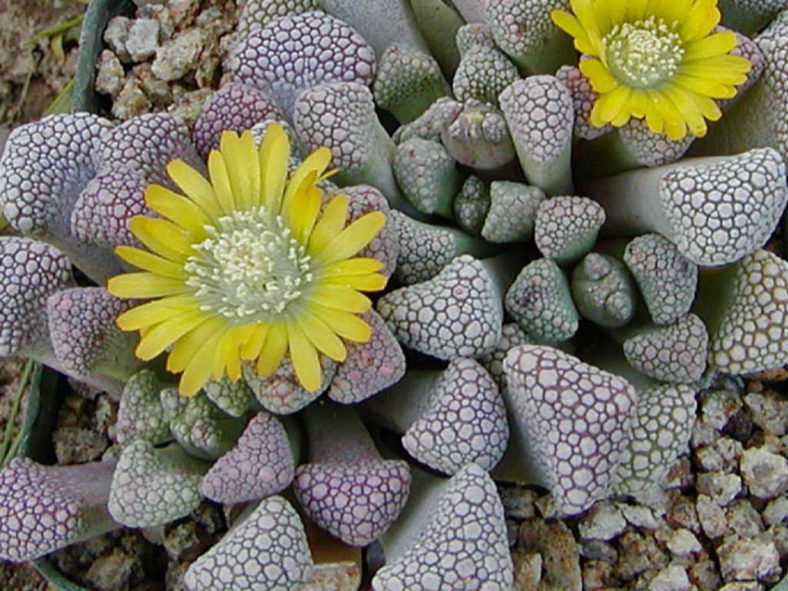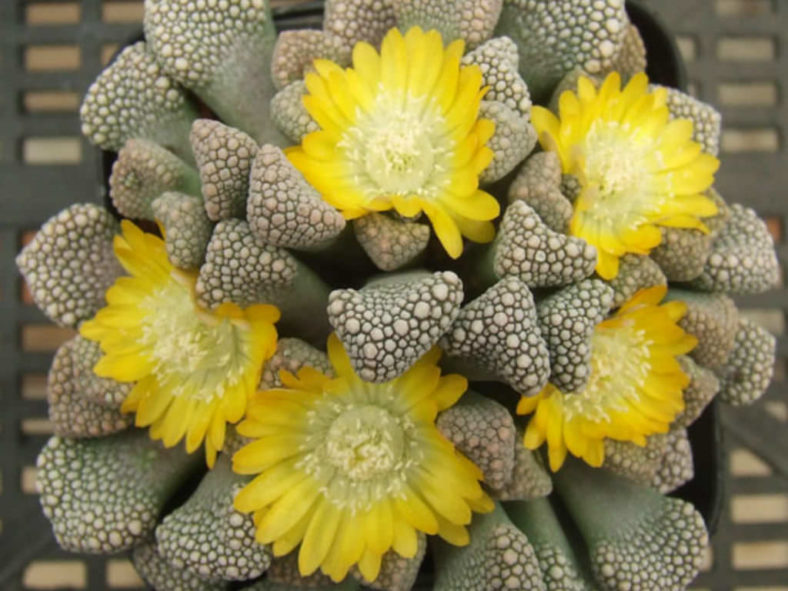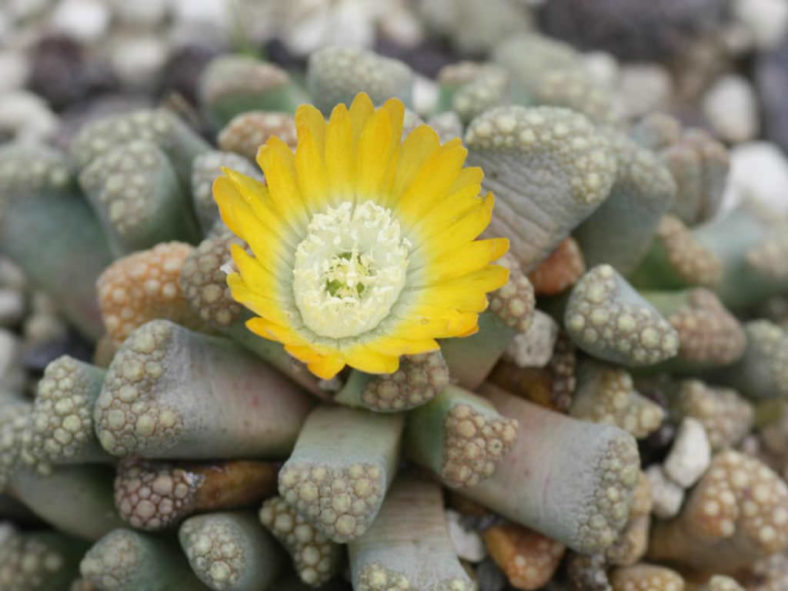Scientific Name
Titanopsis schwantesii (Dinter ex Schwantes) Schwantes
Synonym(s)
Mesembryanthemum schwantesii, Verrucifera schwantesii
Scientific Classification
Family: Aizoaceae
Subfamily: Ruschioideae
Genus: Titanopsis
Etymology
The specific epithet "schwantesii" (pronounced "shwan-TEZ-ee-eye") honors Gustav Schwantes (1881-1960), a German archaeologist and botanist specialist of the Aizoaceae family.
Origin
Titanopsis schwantesii is native to winter rainfall areas of southern Namibia.
Description
Titanopsis schwantesii is a small succulent that forms a mat of rock-like rosettes composed of opposite gray-green leaves with rounded ends densely covered with white, warty tubercles. The rosettes can grow up to 2.8 inches (7 cm) in diameter. The leaves are fleshy, spatulate, and can measure up to 1.2 inches (3 cm) long and 0.3 inches (0.7 cm) wide.
The flowers are daisy-like, pale yellow, and can reach 0.8 inches (2 cm) in diameter. They appear on a short stalk in early spring and open in the afternoon.

Forms (not accepted species) of Titanopsis schwantesii
How to Grow and Care for Titanopsis schwantesii
Hardiness: USDA hardiness zones 9b to 11b: from 25°F (-3.9°C) to 50°F (10°C).
Titanopsis plants are easy to grow and clump readily, forming a beautiful succulent mat. The clumps can be divided for further propagation of the plant. These plants need moderate water during late fall and early spring. Keep the soil somewhat dry the rest of the time.
Maintaining these attractive succulents is not tricky. They need a sandy substrate with little organic material. Titanopsis plants are winter growers and should be kept relatively dry in summer. These plants should also be kept dry when temperatures exceed 45°F (7°C).
The best place to grow Titanopsis is a sunny spot, with full sun in summer and direct sun in winter.
In some cases, division of larger clumps is possible, but as most species have tuberous rootstocks that offset slowly, seed production is the most common propagation method. Sow it in spring, and it should start flowering after two years.
Learn more at How to Grow and Care for Titanopsis.
Links
- Back to genus Titanopsis
- Succupedia: Browse succulents by Scientific Name, Common Name, Genus, Family, USDA Hardiness Zone, Origin, or cacti by Genus
Photo Gallery
Click on a photo to see a larger version.

